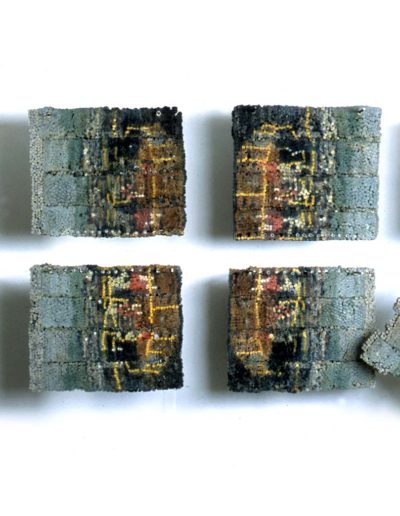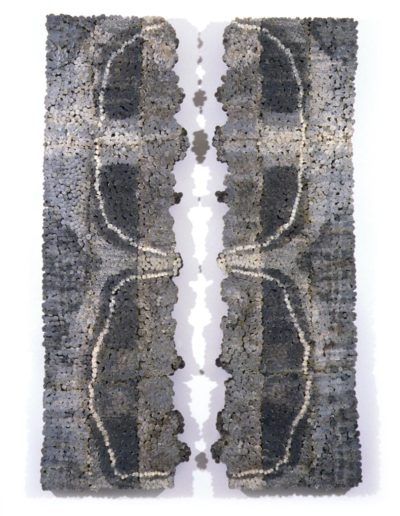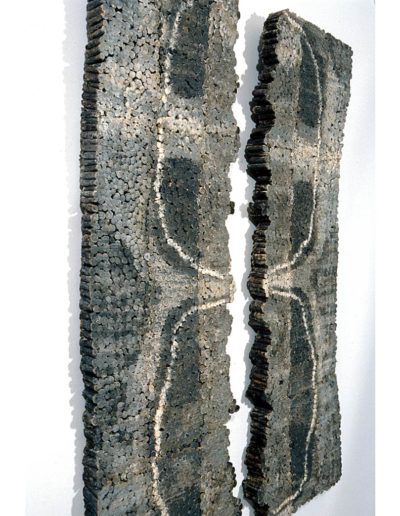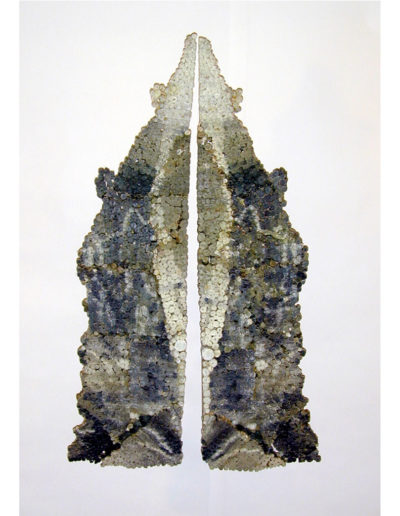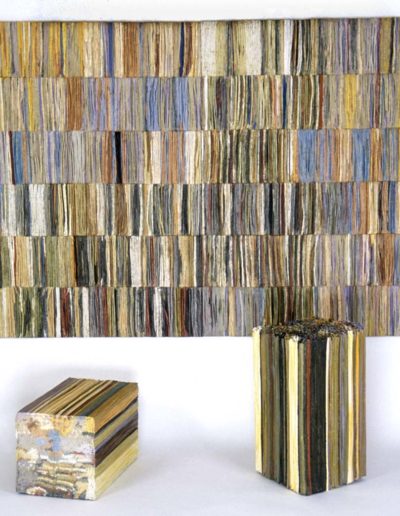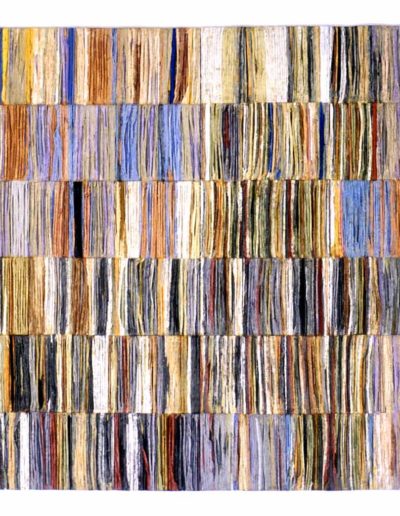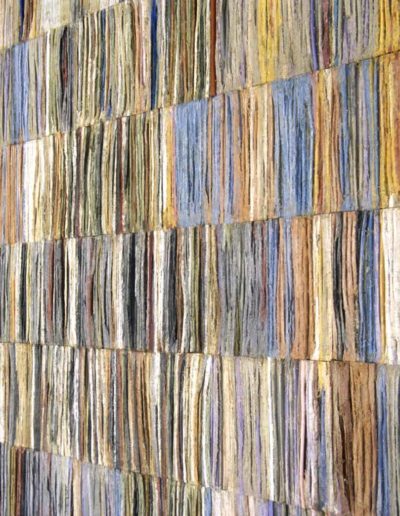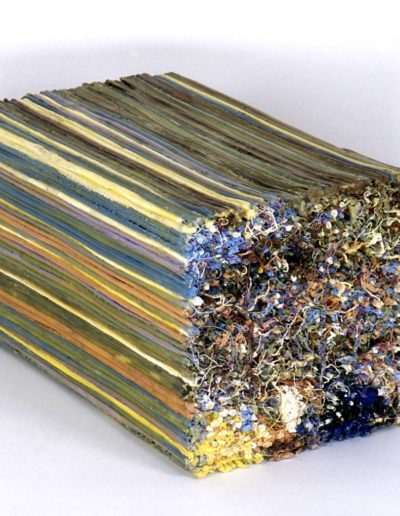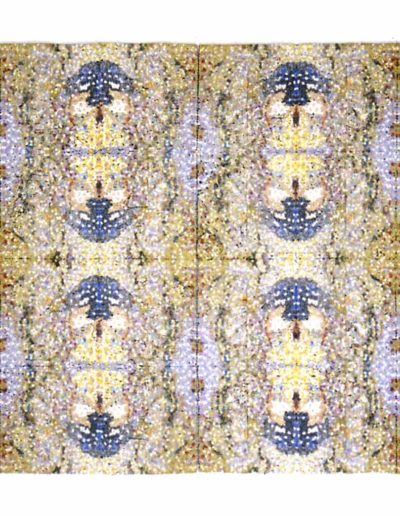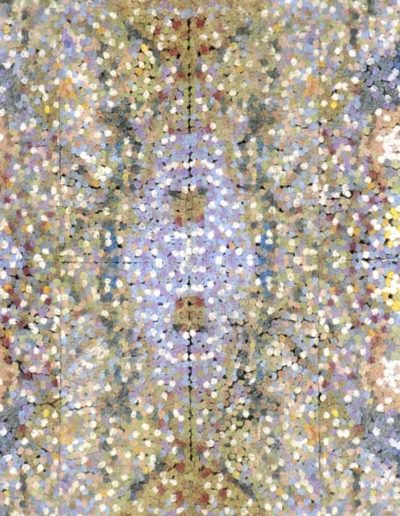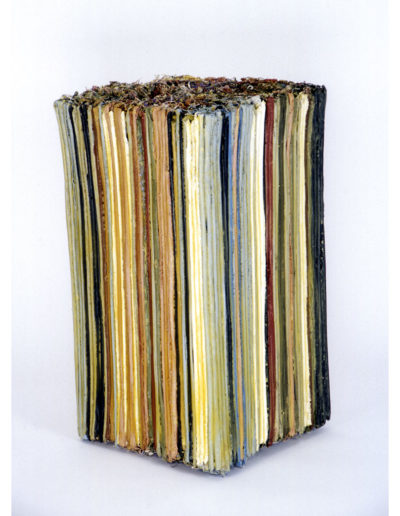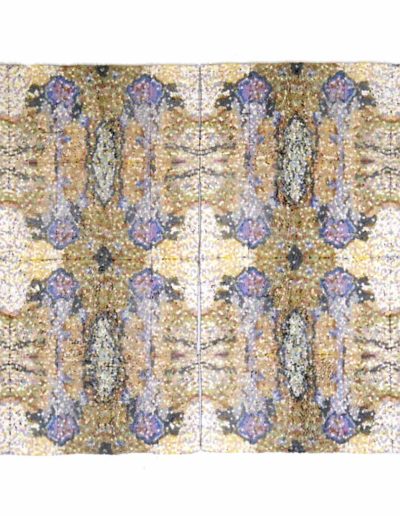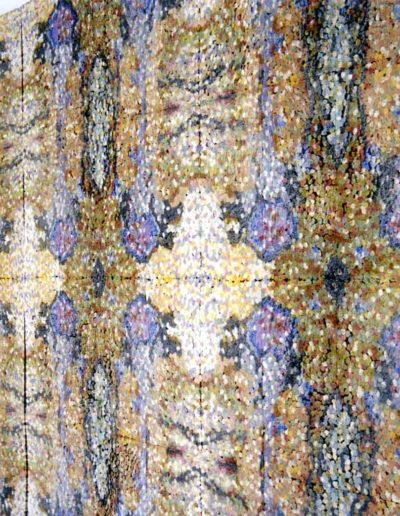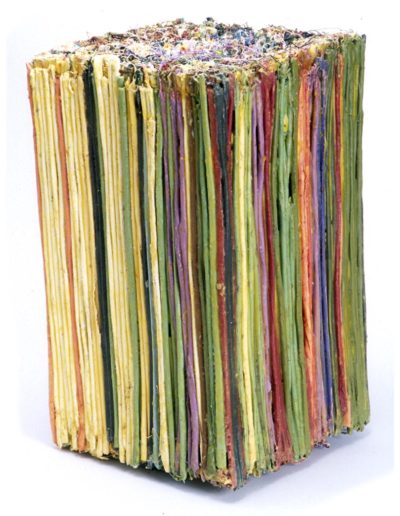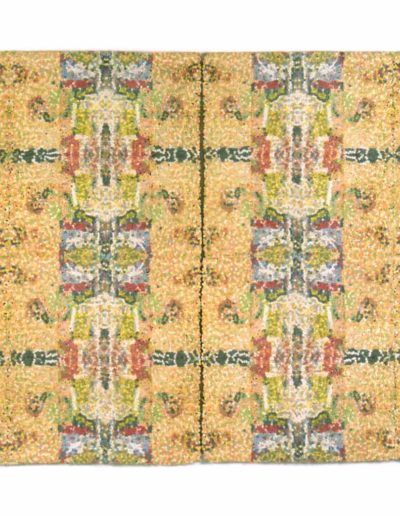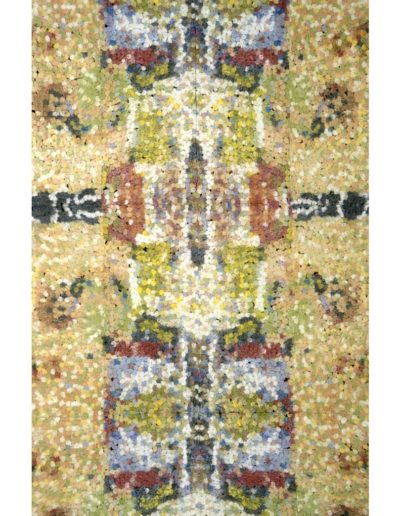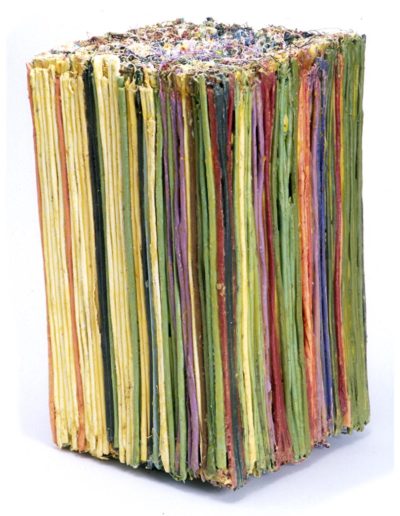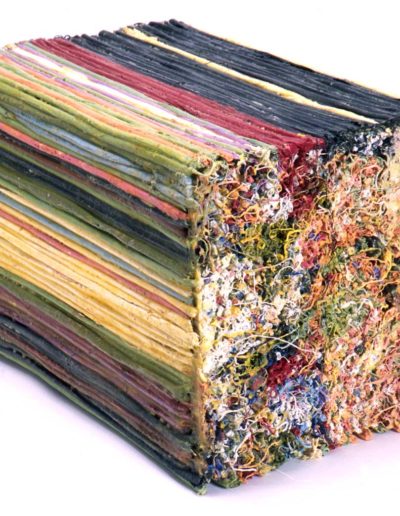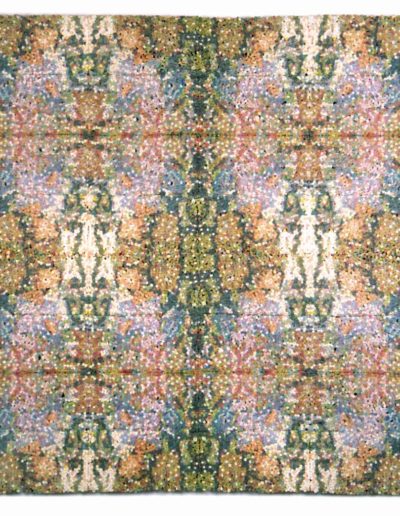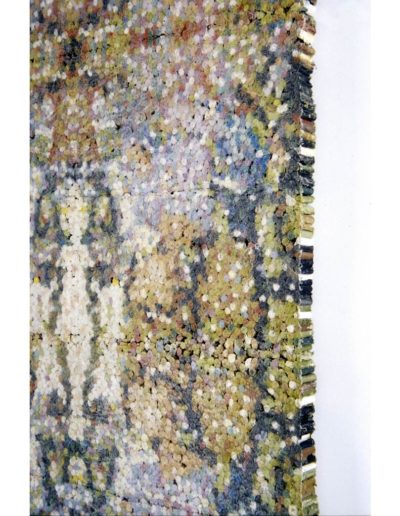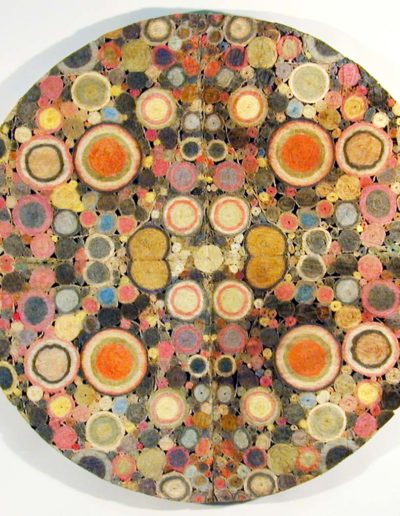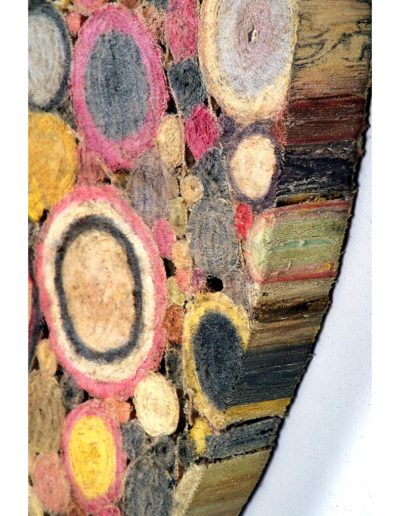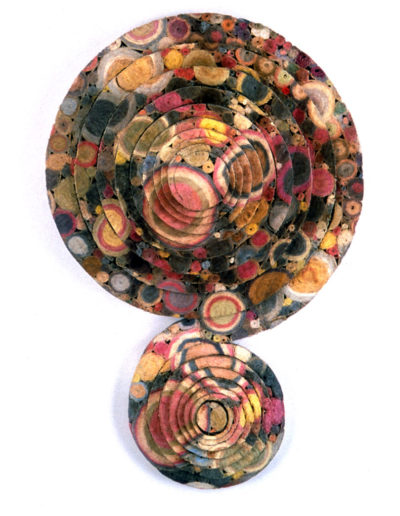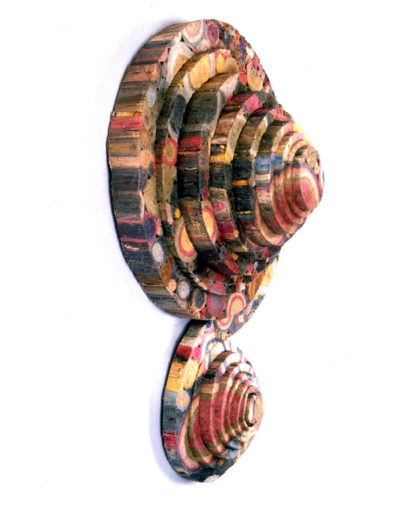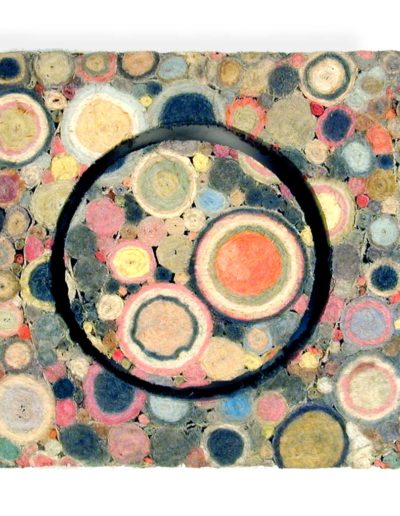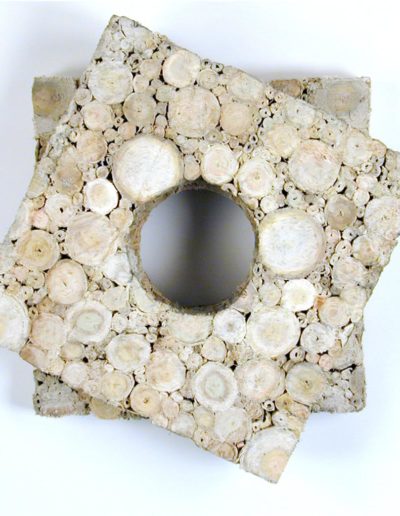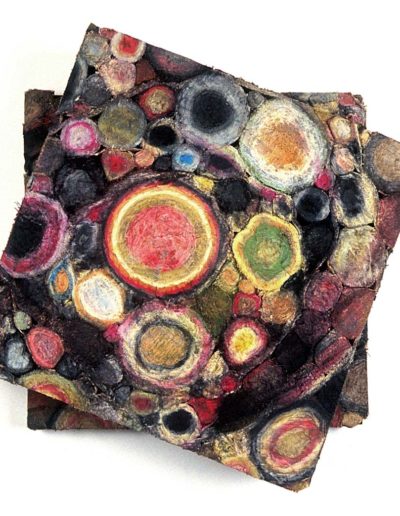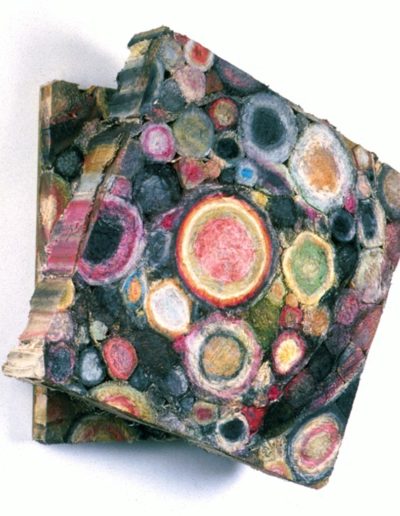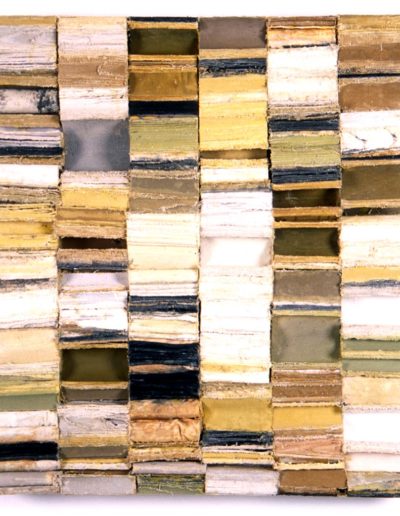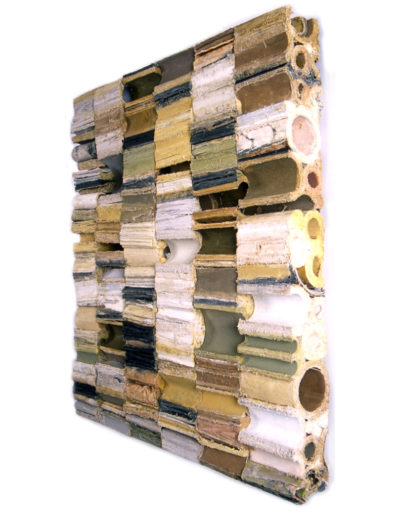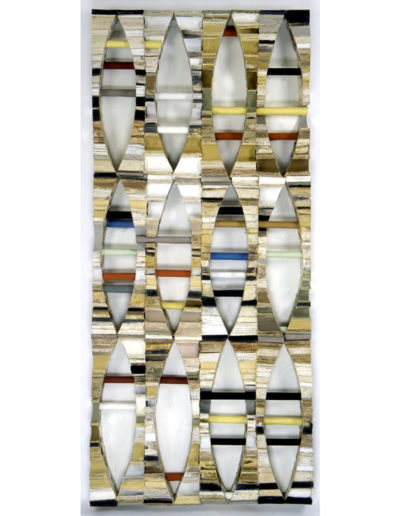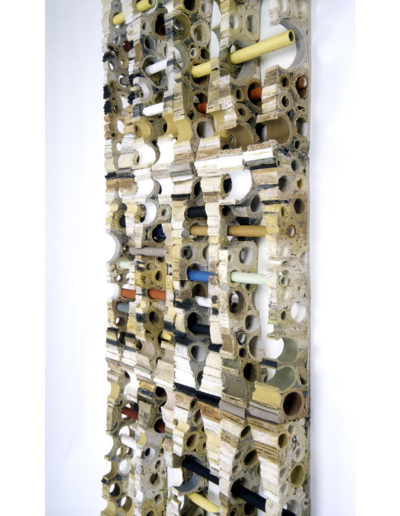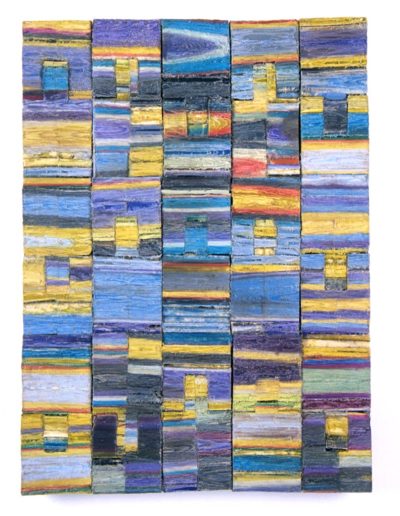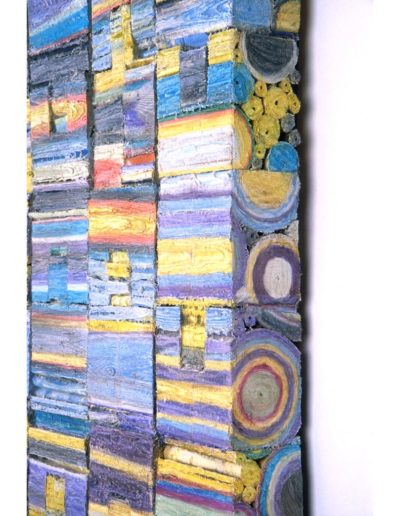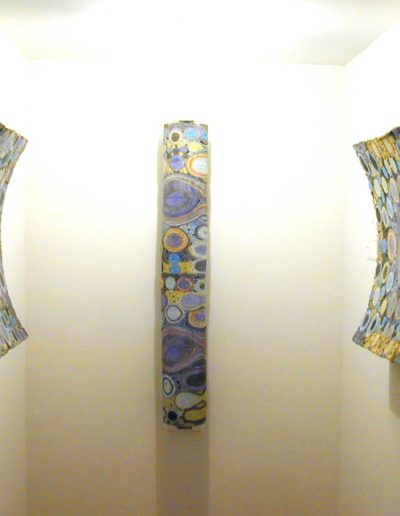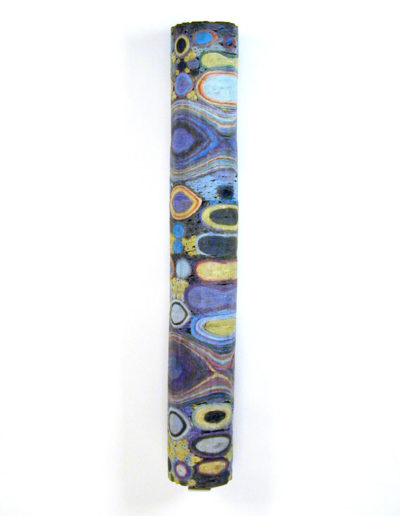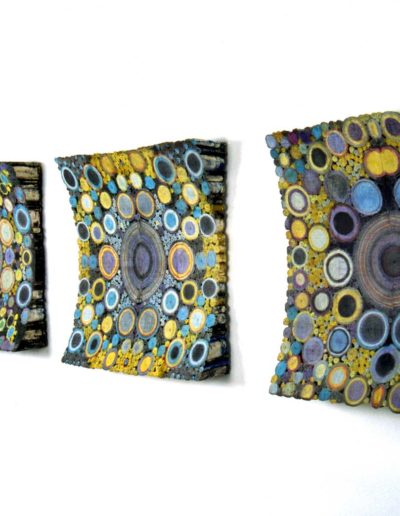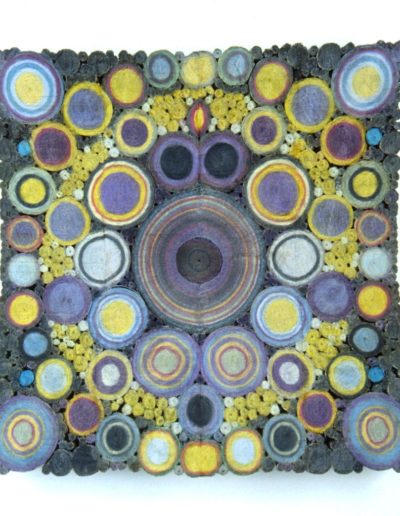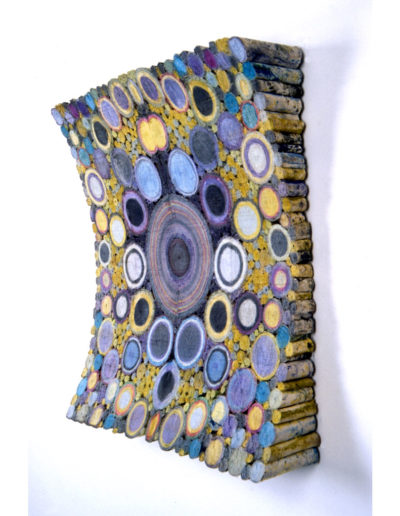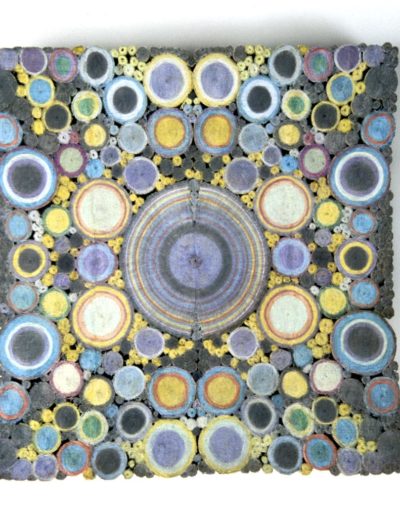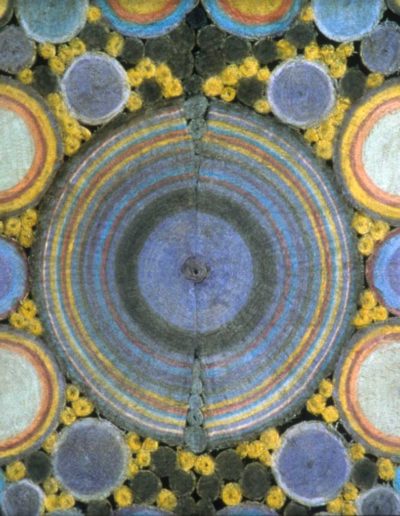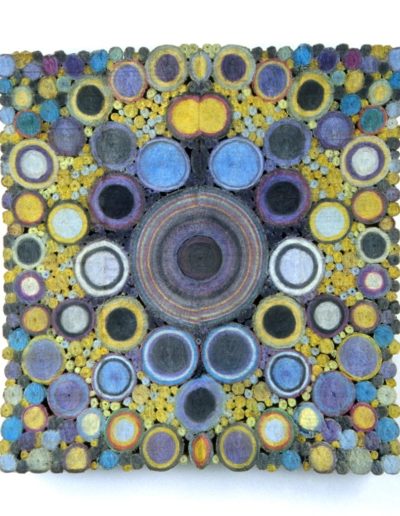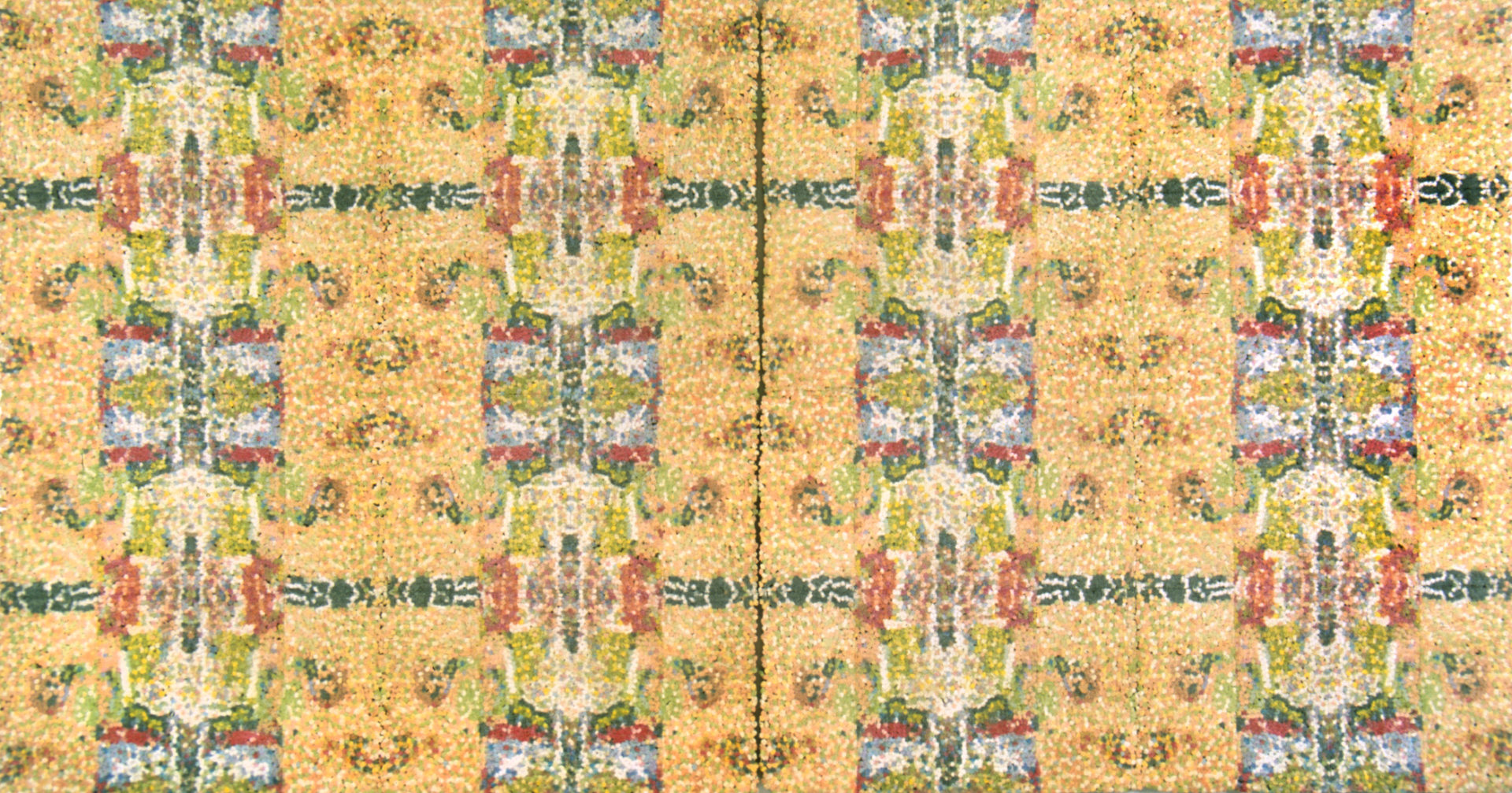
Cut Canvas
For many years I have been in a perpetual process of taking the theoretical notions of deconstruction literally, in order to dismantle, examine and then reconstruct notions held dear and sacred in popular culture and in art. In the Cut Canvas body of work I roll up painted canvasses of varying sizes, and arrange them on their ends in tightly compacted patterns which are then heavily glued, and sometimes combined with supplemental materials. I then cut through them with various tools such as a band saw, chainsaw and Sawzall. Once reassembled, the resultant cross-sections become the surface of a new canvas, one whose painting is already, as it were, baked in. The result is a surprising view, in which that which is normally obscured behind the surface becomes the surface; the canvas, normally the substrate for the painting, becomes the painting, and the paint, rather than taking center-stage, serves the canvas. The traditional vocabulary of painting is thus upended and inverted, and all of the viewer’s assumptions about painting and fiber art are put into question. We are taught to focus on surfaces, to assume that surfaces are what matter, but it turns out that when we question this dogma, what surfaces is a new way of seeing.
The large-scale Studio Scene series is a reconfiguring of photographic images of myself in the studio. (The clearest representation of the original image is seen in the toppled block included in the photograph with Studio Scene 5.) These constructed wall mounted objects become a literal and figurative refiguring leading to a reconsideration of what lies at the “guts” of painting and portraiture. Occupying the gray area between obsession and compulsion, these works are born out of my desire to make a systematic study of my own work, and to completely reinvent the way I paint.
Removeable Shadow continues the exploration of what happens when one exposes interiors, inbetween spaces. If there appear to be references to cell division, the archetypal example of splitting something for generative purposes, that sense of something almost biological occurring may be strengthened by such pieces as Interior Painting Without Interior, in which the process for the entire series is represented; with each cut into the “DNA” of the original block, the material gets replicated and translated into something new.
In all of these pieces, the famous dictum by Kenneth Burke is taken to new literal heights: The medium is truly the message.

